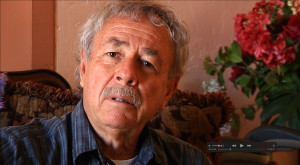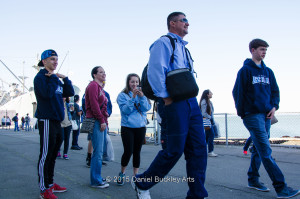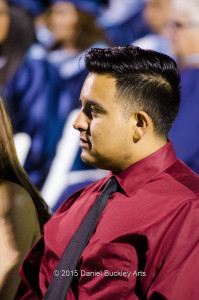In the months ahead the Mariachi Miracle website will share short stories of interest culled from interviews for the film. Here’s some of what to look for.

Alfredo Valenzuela, aka “Dr. V,” helped fuel the mariachi pipeline at Davis Bilingual Elementary School.
- Alfredo Valenzuela, aka Dr. V – How did this humble, unassuming man, raised on a ranch in rural Arizona, become a beloved linchpin in the pipeline that feed’s Tucson’s school-based mariachi programs through his work at Davis Bilingual Elementary School?

Parents of Pueblo High’s Mariachi Aztlan accompany the group on a visit to San Francisco, California.
- Parents: Since the beginning, parental involvement has been key in everything from transporting the kids to keeping them practicing, making sure their trajes are always presentable and being their number-one supporters at every turn. How has what todays parents do changed from what pioneering parents did 50 years ago, and what new challenges do they face?
- The Class of 2016: Meet some of the talented young mariachis graduating high school in 2016, and hear their aspirations for the future.
- Summer programs: School’s out but mariachi education never ends. Get a peak inside mariachi and folklórico dance summer programs.
- Los Changuitos Feos: Formed in 1964 and still going strong, how have the visionary ideas of its early board of directors weathered the ups and downs of the group’s first half century and evolved into the pillars that keep it strong today?
- Mariachis and folklorico dancers in the Community: Youth mariachi and folklorico dancers are constantly on the go helping non-profit organizations, schools and causes of ecery sort. See how participating in community activities makes them the good citizens and community leaders of the future.
- Native Peoples in the Mariachi: The mariachi has become a musical opportunity not just for Mexican Americans but for members of all of Tucson’s multicultural fabric. But since the beginning, the ranks of Tucson’s youth mariachis and folklorico dancers have included members of the local Tohono O’odham and Pascua Yaqui tribes, as well as Native populations from other areas of the state. In some cases the mariachi experience is helping young native musicians reconnect with tribal traditions.
- History – Women in youth mariachis: The mariachi world was an all-boys club when the youth mariachi movement began. Hear from the early female pioneers about their experiences, and what their days in mariachi have meant to their lives.
- History – Lalo Guerrero, the Original Chicano: Tucson celebrates the 100th birthday of one of its favorite sons, the composer of Mexico’s unofficial national Anthem – Nunca Jamas – and so much more, the late Lalo Guerrero.
- History – Ballet Folklórico in Tucson: It’s widely held that ballet folklórico began in Tucson in the early 1970s with Angel Hernandez. But while Hernandez’ impact on the dance in Tucson is profound, its roots stretch back to at least the 1940s.
- History – The Mariachi in Tucson: Most agree that you youth mariachi movement in Tucson starts with Mariachi Los Changuitos Feos in 1964. But figuring out the chronology of Tucson’s mariachi involvement in the broader sense is a harder task. It likely begins with the Club Mariachi at El Casino Ballroom in the late 1940s and early 1950s. The late Tony Garcia of the pioneering Tucson mariachi Los Tucsonenses and former La Fuente owner John Huerta weigh in.
- History – The Tucson International Mariachi Conference: How did what is now considered the longest continuously operating mariachi conference in the world begin, and what has been its impact on education, the growing youth mariachi movement and Tucson in general over three-plus decades?
- Mariachi Education – A Tucson export: What role have Tucson mariachi educators played in the growth of mariachi programs in cities well beyond Tucson.
- Notes from the producer: The making of The Mariachi Miracle is a journey of discovery, a marathon and an evolving puzzle. Daniel Buckley shares insights on how things shape shift along the way.


